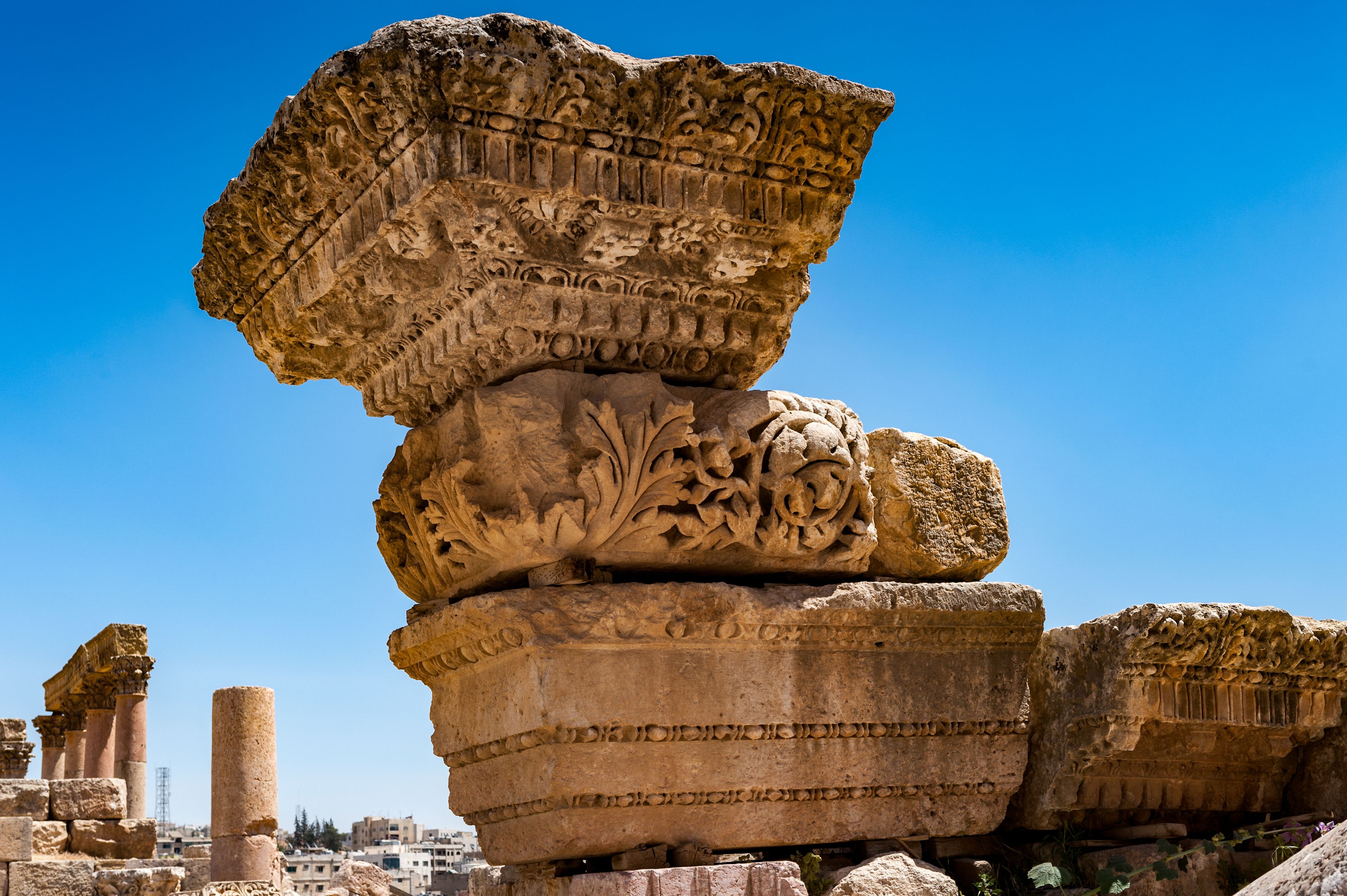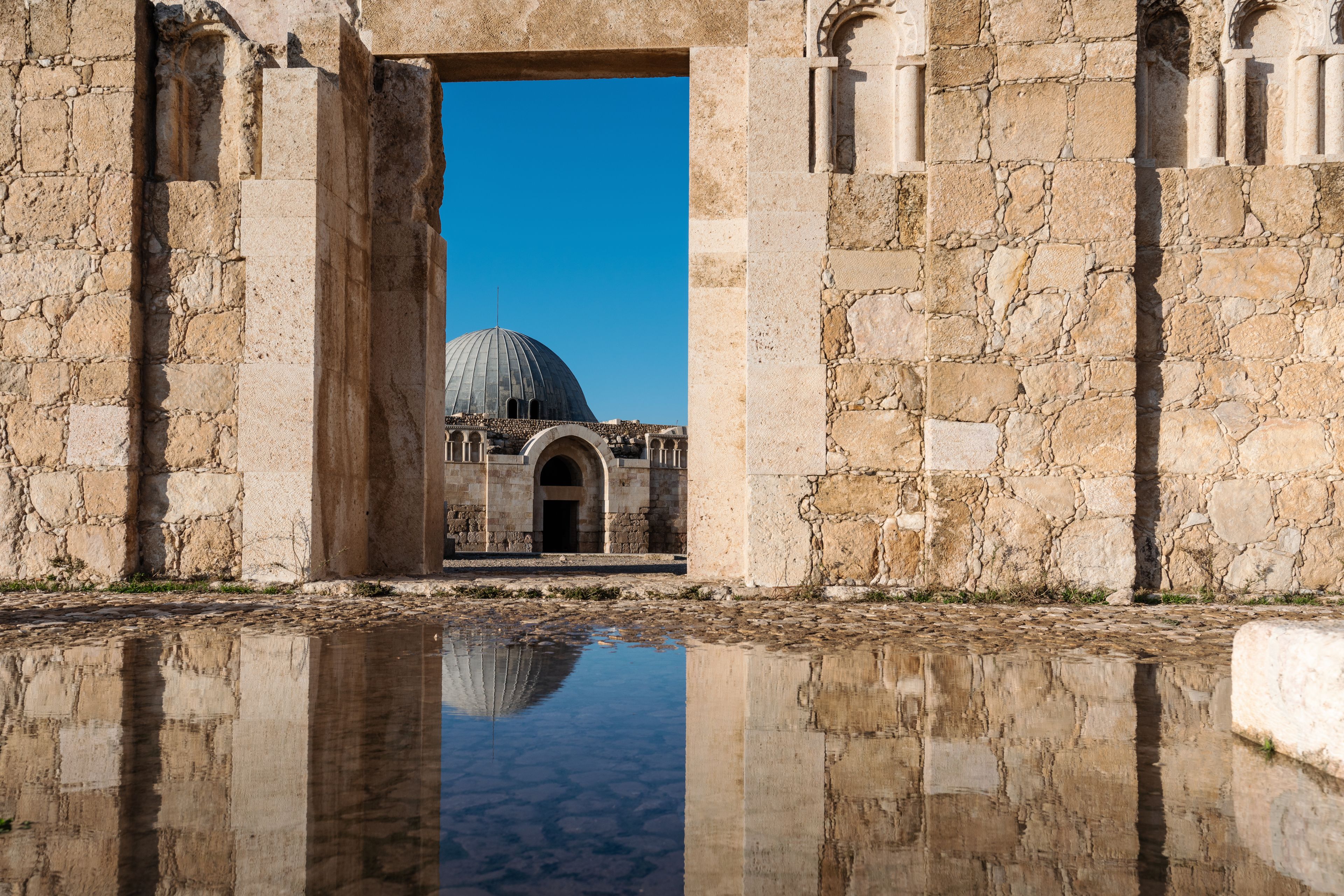Roman Treasures and Dramatic Landscapes in Jordan

After the conquest of the region by General Pompey, Jordan soon became an integral part of the Roman Empire, leaving behind a rich tapestry of historical and architectural marvels that can still be seen today.
Indeed, throughout the recorded past, Jordan shook to the often-heavy footfalls of conquerors and felt the sweeping movements of peoples and customs, of prophets and kings. Its Iron Age history, home to the Israelites, Ammonites, Edomites and Moabites, is documented in the Old Testament, while the upheavals caused by the mighty Assyrian and Babylonian Empires and the Roman Empires are recorded in the New Testament. Here the East first met the revolution of Hellenism, bringing its world philosophy and technological expertise.
The gorges of the wadi beds, the deserts of black basalt and golden sand plus the end of the Great Rift Valley containing the salty waters of the Dead Sea create dramatic backdrops for its historic tales, with Petra’s tombs and temples just being a fraction of Jordan’s story. As well as these iconic gems, we explore traces of Roman legions, biblical tribes, Christian crusaders and Islamic caliphates in this promised land of archaeology and fascinating history, discovering along the way how the Roman road network in Jordan facilitated trade and movement across the empire too, contributing to the economic prosperity of the region.
Join Andante on tour in Jordan – Petra & the Desert Fortresses to experience the dramatic landscape and discover its Roman treasures, a fascinating destination for any history enthusiast.
“I enjoyed every minute, I felt safe and well looked after, I learnt and saw so much. A good holiday.”

Jerash
Known as the ‘Pompeii of the East’, Jerash (ancient Gerasa) is set in the pine valleys of the biblical land of Gilead and is one of the best-preserved Roman cities in this part of the world. Hidden in the sand for centuries before its excavation, it was founded as a Greek city by Alexander the Great but only truly flourished under the Romans, becoming a fascinating example of Roman urbanism that rivals ancient cities found in Italy. The architecture is particularly fine and includes the impressive Hadrian’s Arch (built in AD 129 to mark Emperor Hadrian’s visit), the Hippodrome, where thrilling chariot races took place in front of thousands of spectators, as well as the Corinthian columns of the Temple of Artemis and the Oval Plaza – framed by a magnificent colonnade – a unique feature of the Forum. Strolling between these wonders along centuries-old avenues is undoubtedly a highlight of any trip to Jordan.

Wadi Rum & Petra
There are plenty more iconic spots in Jordan where if you scratch the surface, you will no doubt find influences and stories dating back to the Roman period. While taking 4x4s through the otherworldly scenery of Wadi Rum, made famous by the filming of ‘Lawrence of Arabia’, consider that this was once home to the largest Roman copper mine in the empire. Similarly, when strolling through spectacular Petra, look out for the many Roman marks on the ancient city, from the style of its landmarks and sculptures to the layout itself. The incredibly straight Colonnaded Street once ran through the centre of the bustling metropolis and, with its large columns, was unlike anything previously seen in Petra. Like many other places across the globe, the Romans certainly left their mark and created a century-spanning legacy here.

Amman
Jordan’s modern capital of Amman juxtaposes wonderfully with its ancient ruins. The Archaeological Museum is a gem to explore and was purposefully established on Citadel Hill so that the crumbling Roman, Byzantine and Arab Citadel would forever be a part of it. The museum is home to artefacts from archaeological sites from across the country, including the Dead Sea bronze scroll written in Aramaic characters, as well as Roman glass, the marble bust of the protector of Roman Philadelphia and many more treasures. The citadel is one of the oldest continuously inhabited places in the world and is also home to the ruins of the Roman Temple of Hercules with its typical tall columns and panoramic views. Demonstrating the religious and cultural influence of Romans in the region, this incredible window into the past was built during the reign of Emperor Marcus Aurelius in the 2nd century AD and also features ruins of The Hand of Hercules, believed to have been part of a gigantic marble statue of the demi-god Hercules.

Umm al-Rasas
The well-excavated church ruins and spectacular mosaics at Umm al-Rasas are true sights to behold. Inhabited since the Iron Age and mentioned in the Old and New Testaments, the Romans once used the land here as a military outpost before fortifying the city with a large wall. It then became one of the strongholds that formed the Limes Arabicus, a desert frontier created to protect the southeastern part of the Roman Empire from the Sassanid Empire and troublesome raiders. A UNESCO-listed Roman and Byzantine gem, the mosaics of the churches here boast fine depictions of the nearby principal cities and offer clues about this region from centuries ago. Don’t miss the mosaic flooring in the Church of St Stephen, the largest of its kind in Jordan, and just pause here to imagine how many people have traipsed over this spectacular marvel before us.
Expert-led
Join us in Jordan with your expert Guide Lecturer, Nick Jackson. Graduating in archaeology from the Institute of Archaeology at University College London, Nick later took up a research post at the University of Cambridge. He is an archaeologist and historian with over 20 years of excavation and guiding experience for Andante in the eastern Mediterranean. His varied archaeological excavations in the Middle East saw him excavate the oldest Nabatean house ever found, but have focused primarily on the late Bronze Age, specifically the developments in the region at the end of 2nd Millennium BCE. His current study projects include the cultural evolution of the pre-pottery Neolithic. Living in Berlin for the last two decades Nick has been a guest lecturer at Stanford in Berlin, a book researcher and documentary presenter.

NEWSLETTER
Opt-in to our email newsletter and hear about new offers first – view our privacy policy for details.


